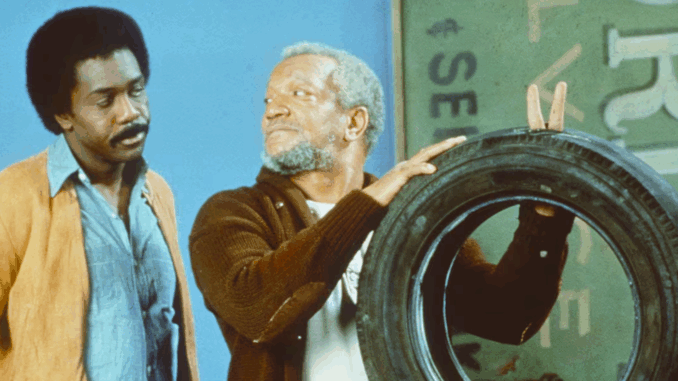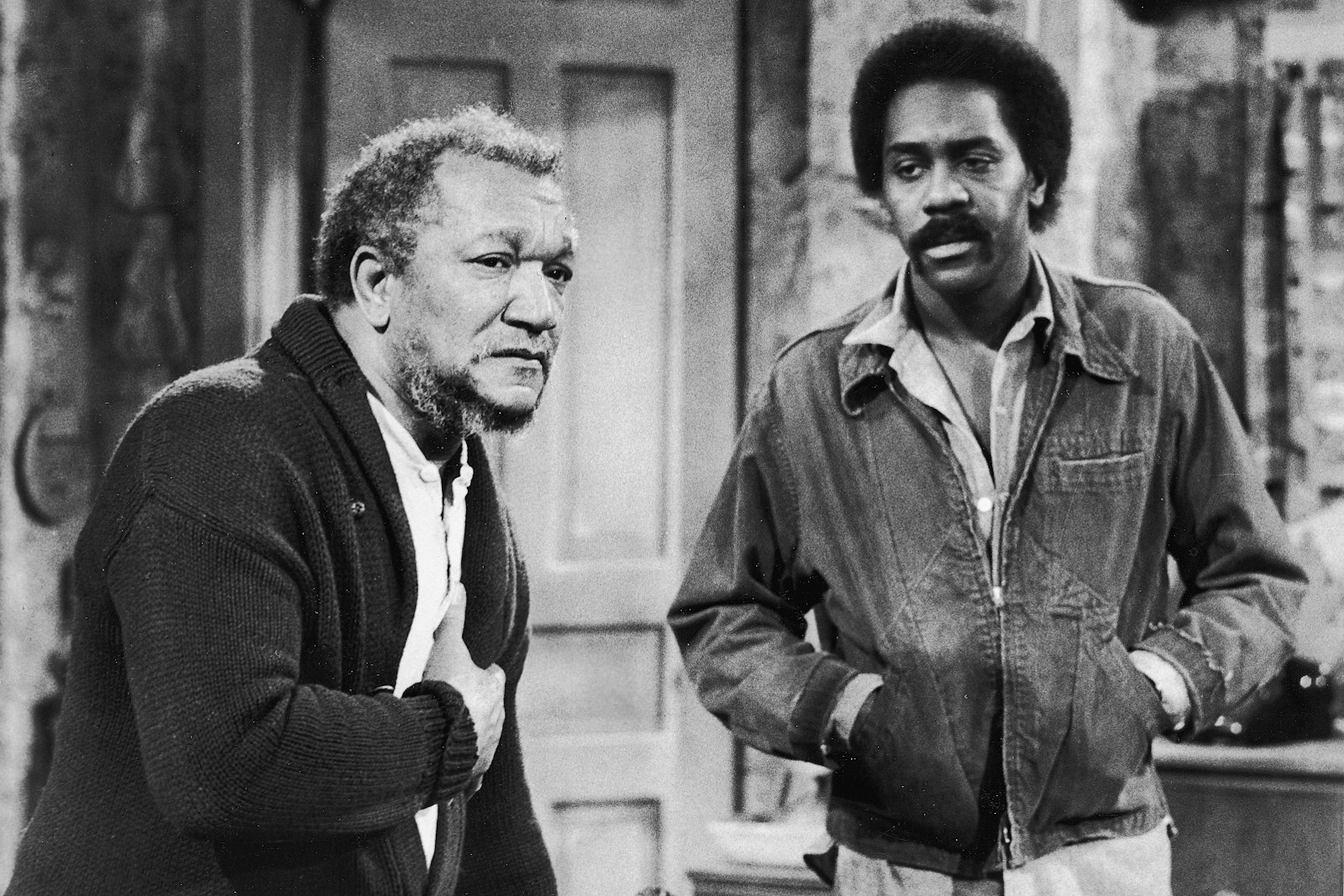
The Early Days of a Groundbreaking Sitcom
When Sanford and Son premiered on NBC in January 1972, American television wasn’t quite ready for what was coming. Based on the British sitcom Steptoe and Son, this U.S. version, developed by Norman Lear, introduced viewers to Fred G. Sanford and his son Lamont, junk dealers living in South Central Los Angeles. What set Sanford and Son apart was its unapologetic depiction of working-class Black life — a rarity on network television at the time.
Redd Foxx: The Unfiltered Heart of the Show
At the core of the show was Redd Foxx, a stand-up comedy legend known for his raunchy routines. As Fred Sanford, Foxx brought his signature sharp wit and physical comedy to primetime. He played a cranky, hilarious, and sometimes scheming widower whose interactions with his son drove much of the show’s heart and humor.
Fred’s famous fake heart attacks (“This is the big one! I’m coming, Elizabeth!”) became a running gag that highlighted Foxx’s physical comedy genius.
Lamont Sanford: The Straight Man with Dreams

Demond Wilson played Lamont, the long-suffering son trying to rise above his father’s world. Lamont often represented a more forward-looking generation, clashing with Fred’s stubborn and often prejudiced worldview. Their dynamic wasn’t just funny — it was a mirror of generational tensions in Black families during the 1970s.
Confronting Race, Class, and Stereotypes with Humor
While Sanford and Son was packed with jokes, it also bravely addressed difficult themes. Whether it was prejudice, gentrification, or economic struggle, the show never backed down from portraying real issues — though always through the lens of comedy.
Episodes like “Lamont Goes African” and “Fred Sanford, Legal Eagle” showed how the show could challenge cultural assumptions while still getting laughs.
The Legacy Lives On
Sanford and Son ran for six seasons until 1977, producing over 130 episodes. It paved the way for other Black-centered sitcoms like Good Times, The Jeffersons, and What’s Happening!!. It also helped redefine what American TV could be — more inclusive, more daring, and much, much funnier.
Even decades later, Fred Sanford’s punchlines and Lamont’s exasperated eye-rolls continue to entertain new generations on reruns and streaming services.
